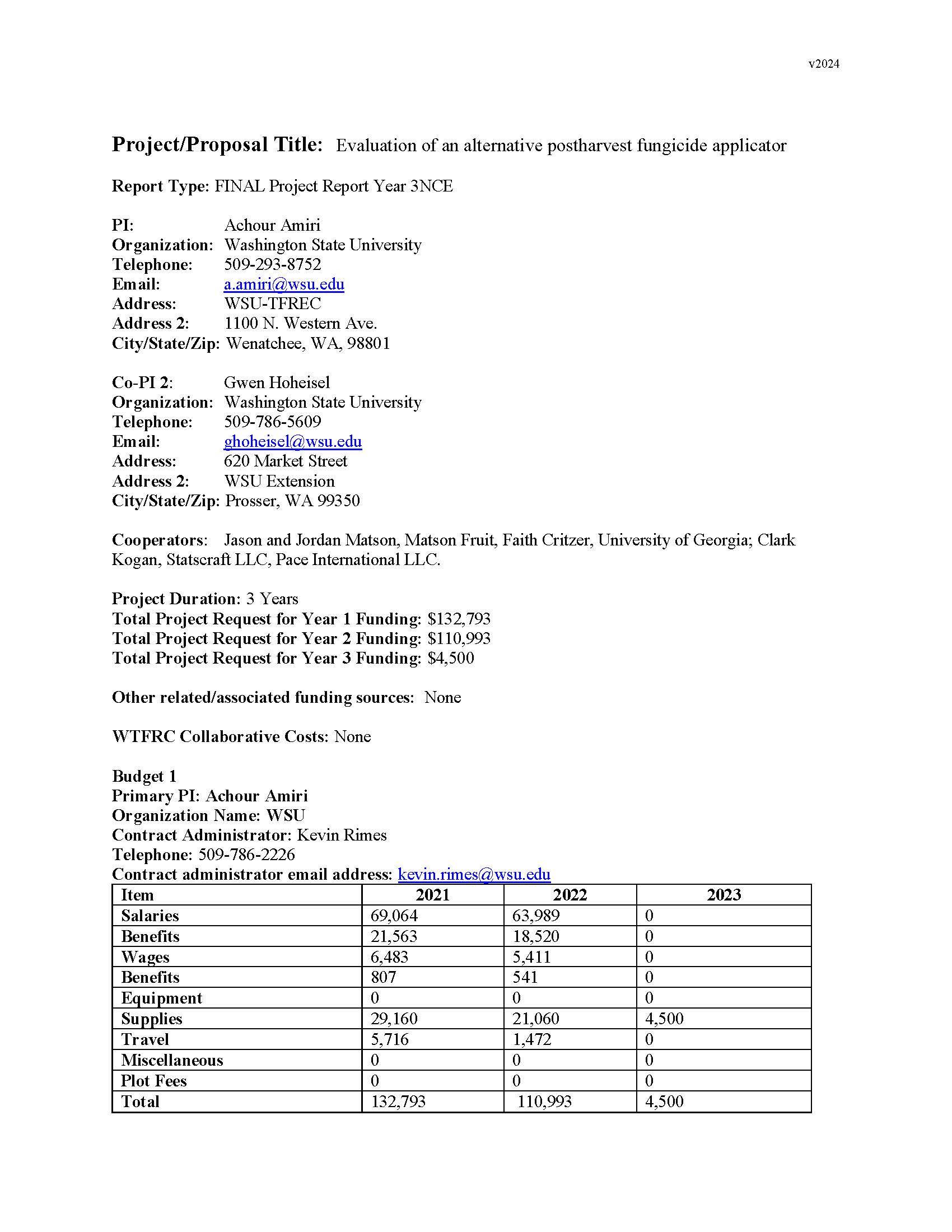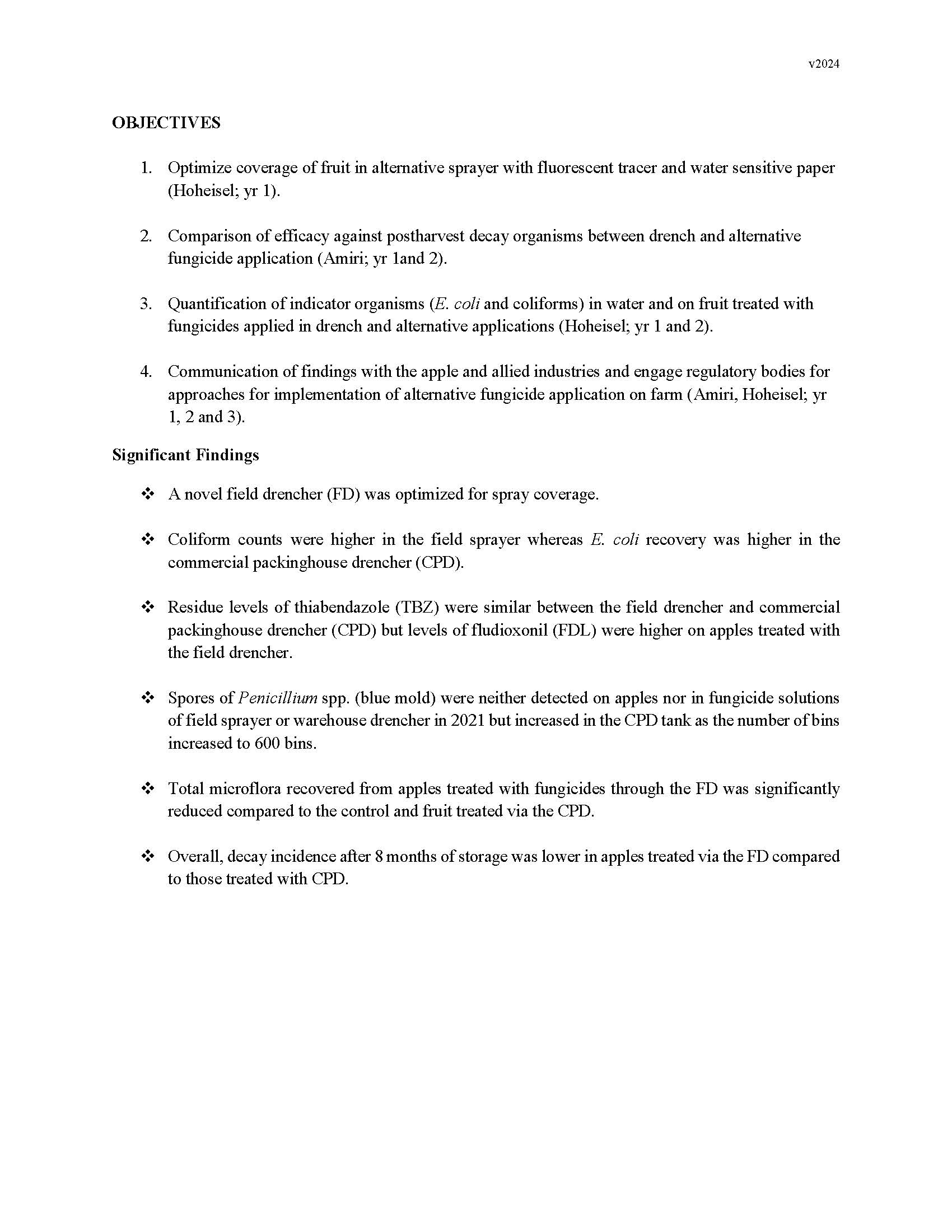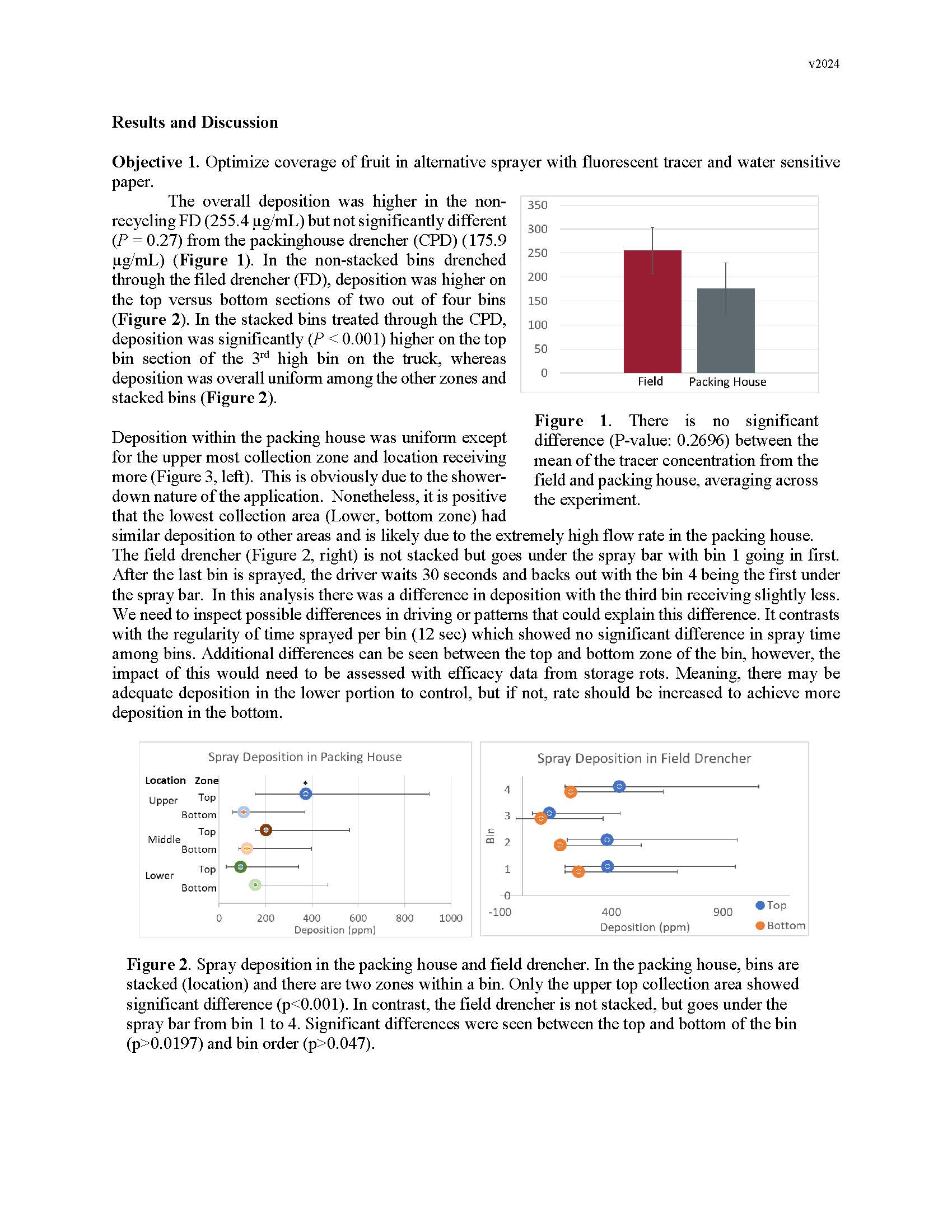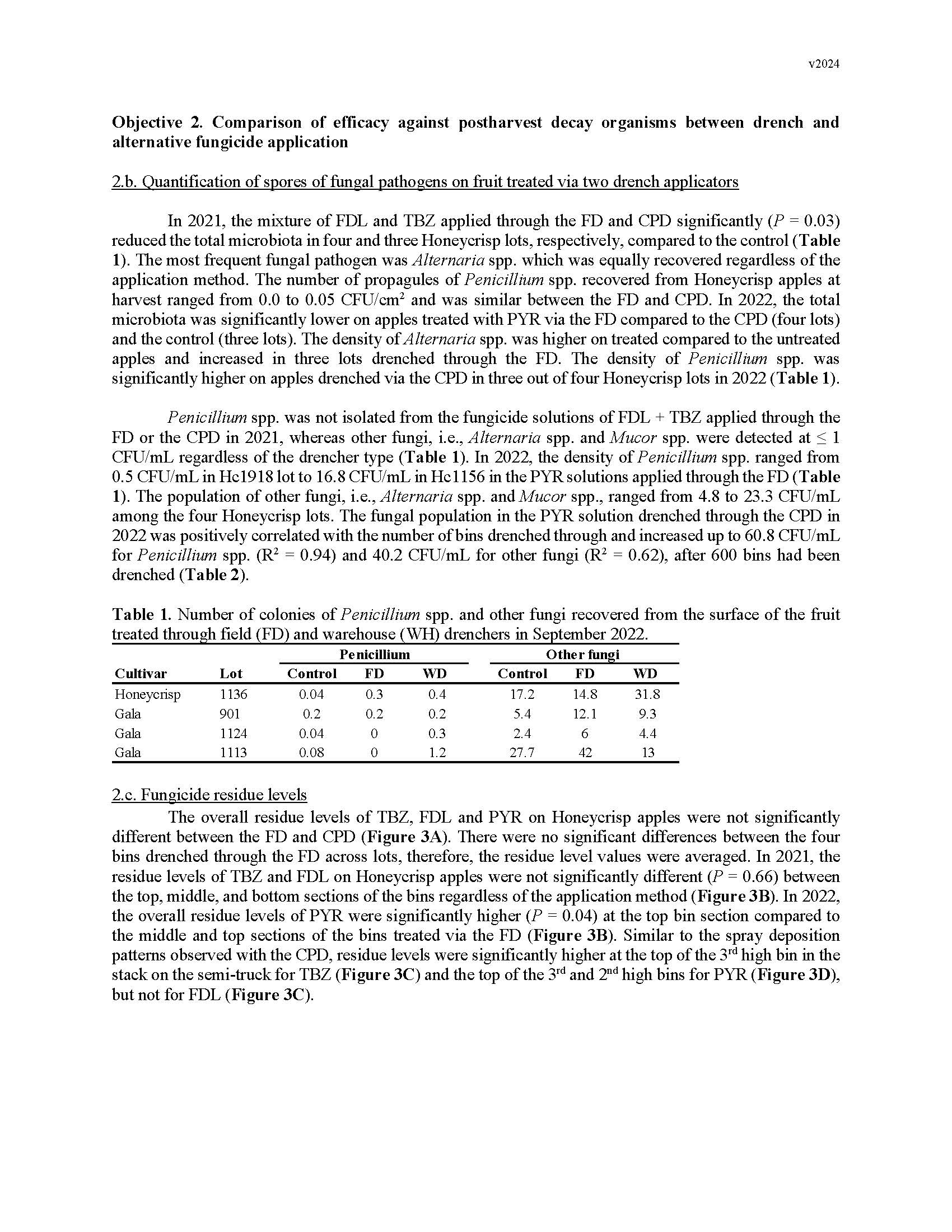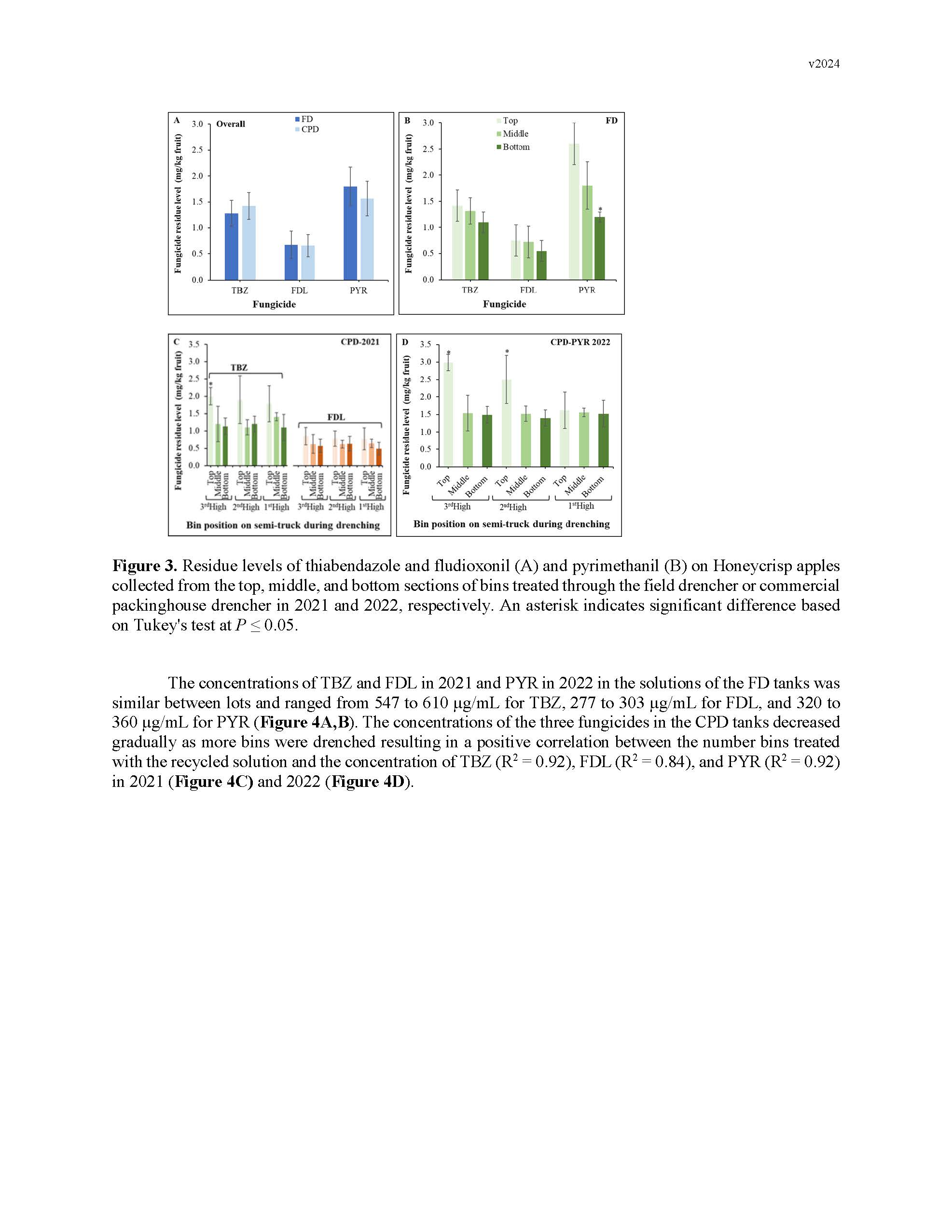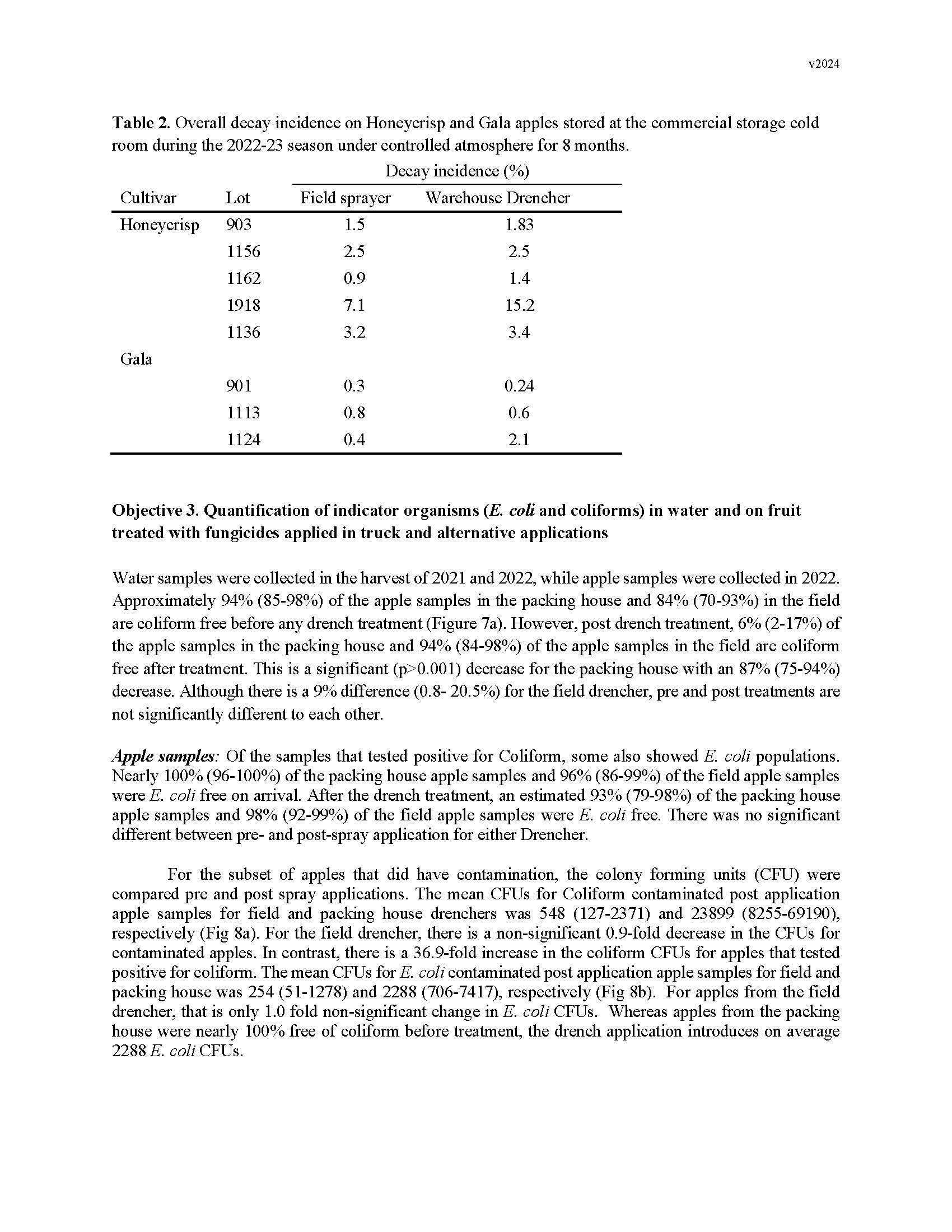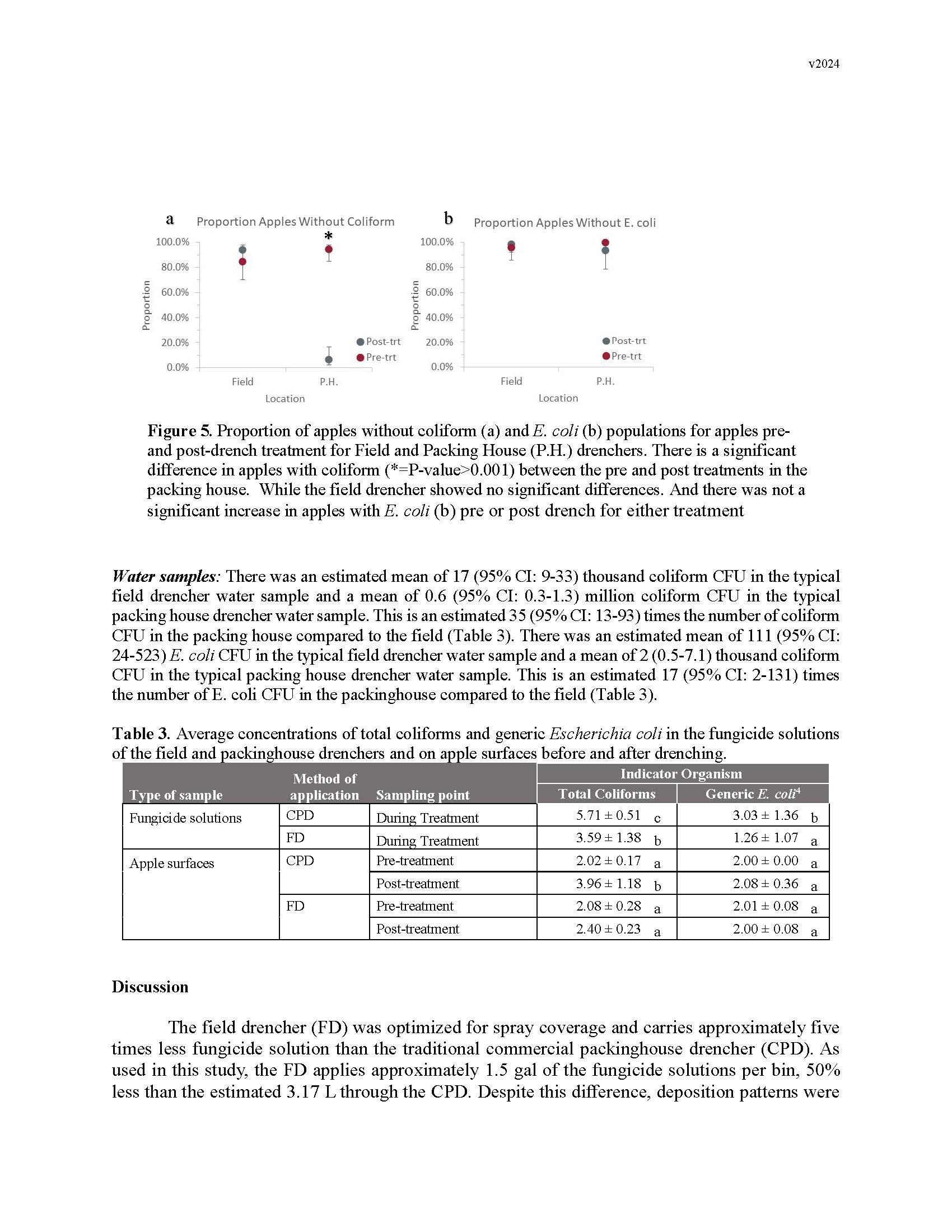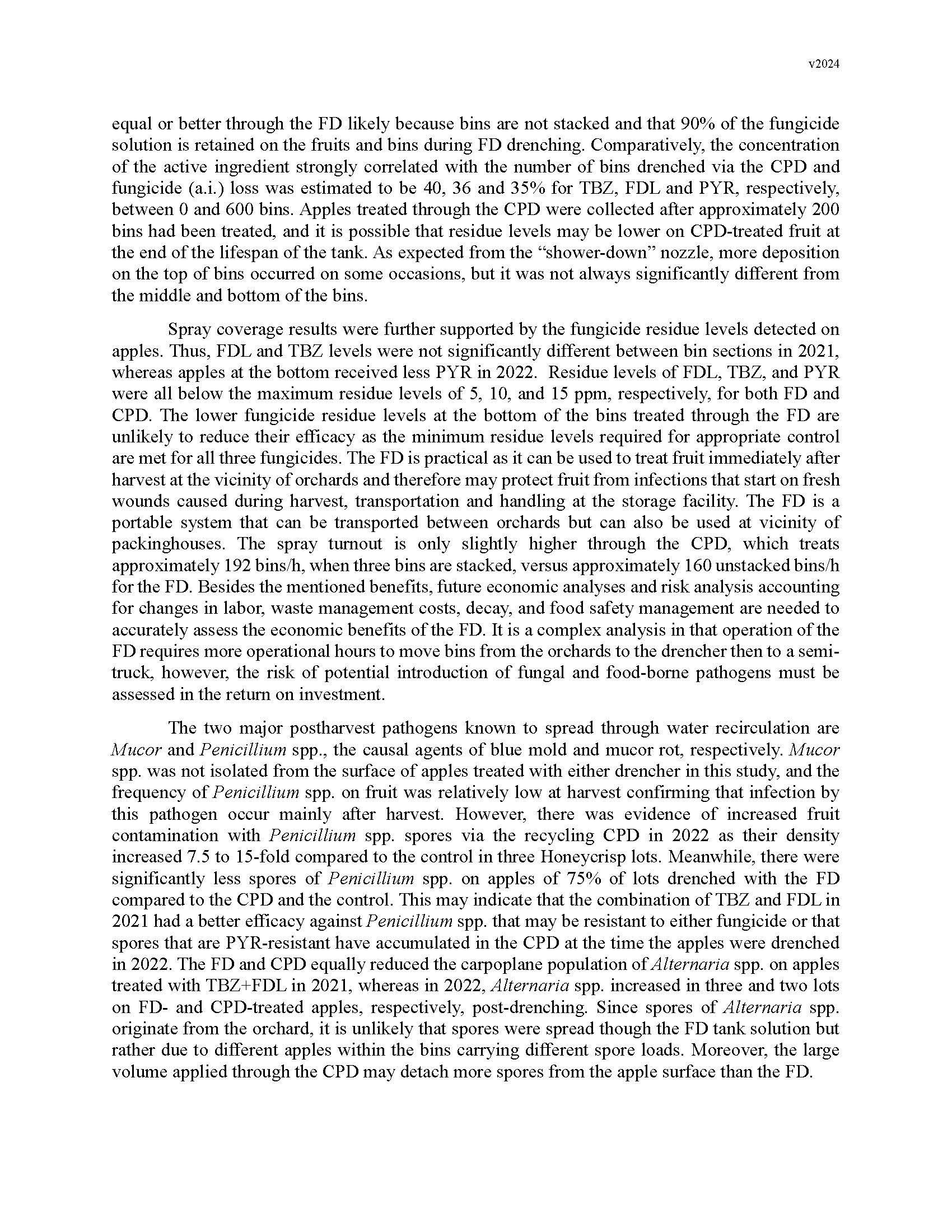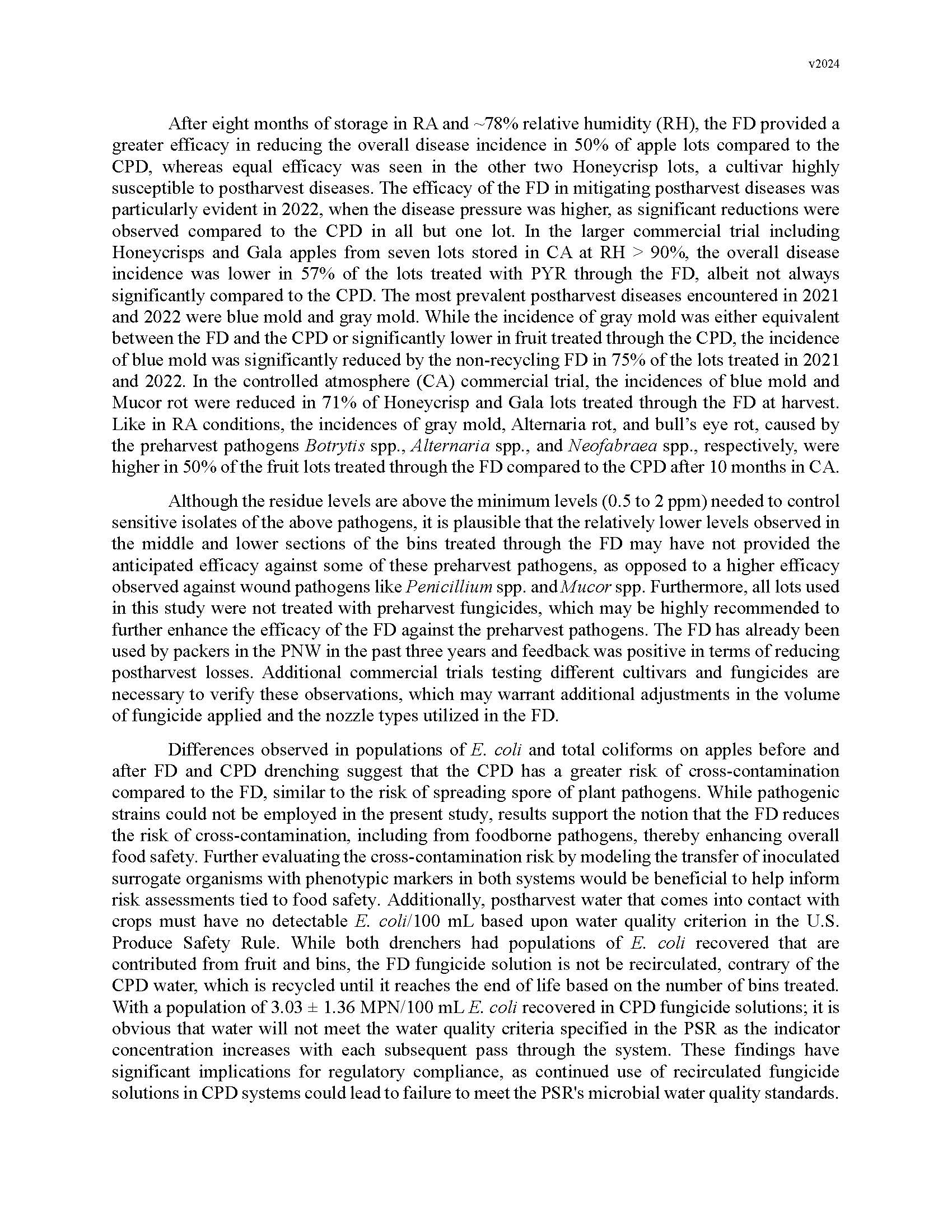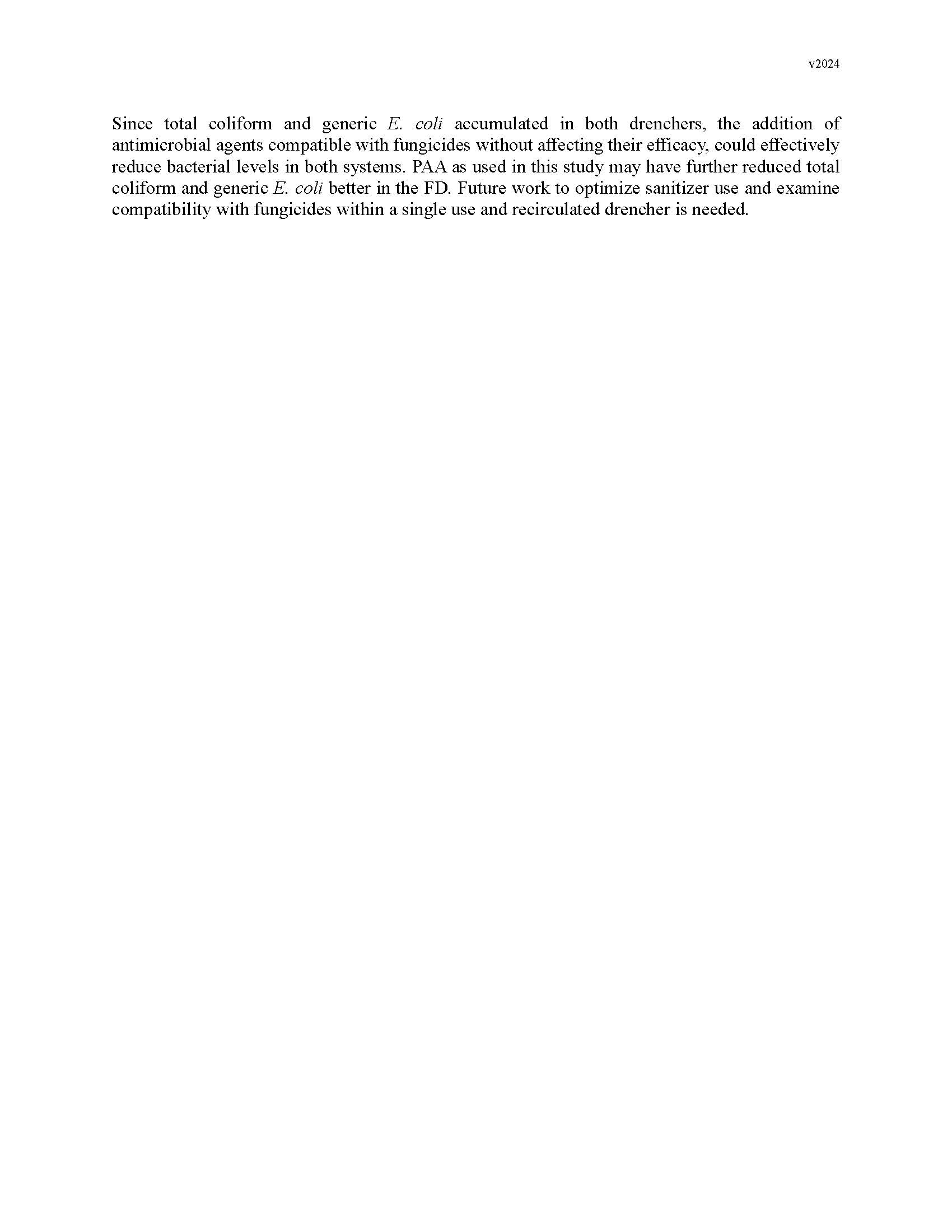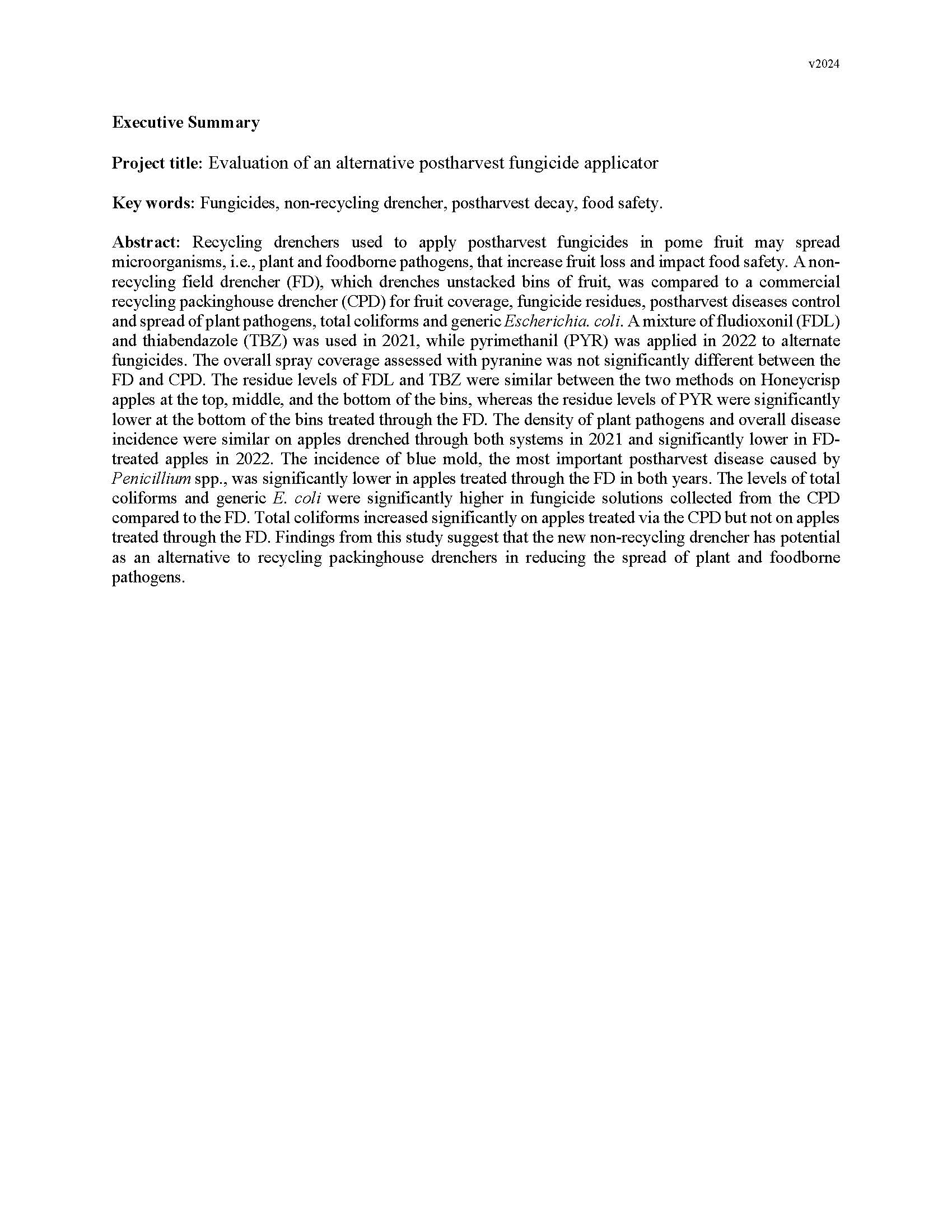Evaluation of an alternative postharvest fungicide applicator
Author: Achour Amiri
Published: 2025
Summary: Recycling drenchers used to apply postharvest fungicides in pome fruit may spread microorganisms, i.e., plant and foodborne pathogens, that increase fruit loss and impact food safety. A non-recycling field drencher (FD), which drenches unstacked bins of fruit, was compared to a commercial recycling packinghouse drencher (CPD) for fruit coverage, fungicide residues, postharvest diseases control and spread of plant pathogens, total coliforms and generic Escherichia. coli. A mixture of fludioxonil (FDL) and thiabendazole (TBZ) was used in 2021, while pyrimethanil (PYR) was applied in 2022 to alternate fungicides. The overall spray coverage assessed with pyranine was not significantly different between the FD and CPD. The residue levels of FDL and TBZ were similar between the two methods on Honeycrisp apples at the top, middle, and the bottom of the bins, whereas the residue levels of PYR were significantly lower at the bottom of the bins treated through the FD. The density of plant pathogens and overall disease incidence were similar on apples drenched through both systems in 2021 and significantly lower in FD-treated apples in 2022. The incidence of blue mold, the most important postharvest disease caused by Penicillium spp., was significantly lower in apples treated through the FD in both years. The levels of total coliforms and generic E. coli were significantly higher in fungicide solutions collected from the CPD compared to the FD. Total coliforms increased significantly on apples treated via the CPD but not on apples treated through the FD. Findings from this study suggest that the new non-recycling drencher has potential as an alternative to recycling packinghouse drenchers in reducing the spread of plant and foodborne pathogens.
Keywords:

